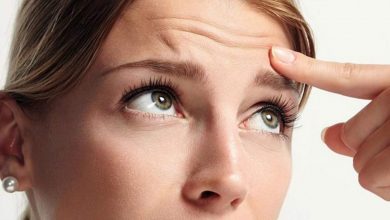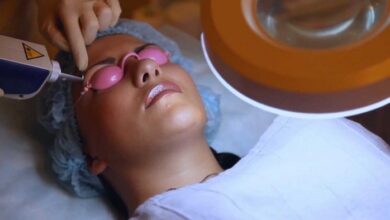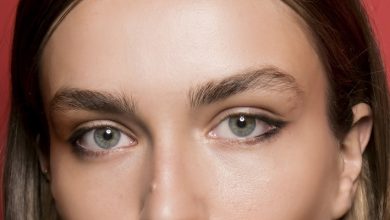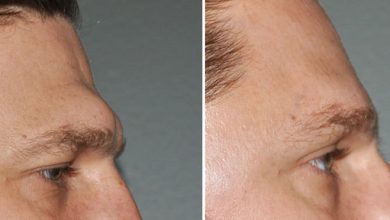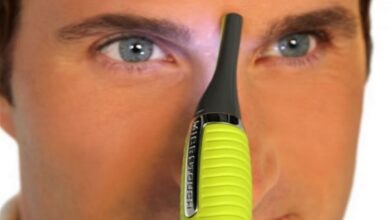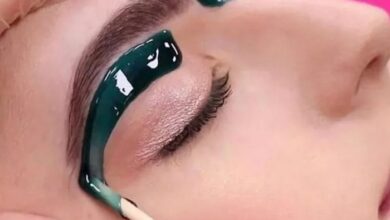Can I wax my eyebrows after cataract surgery?
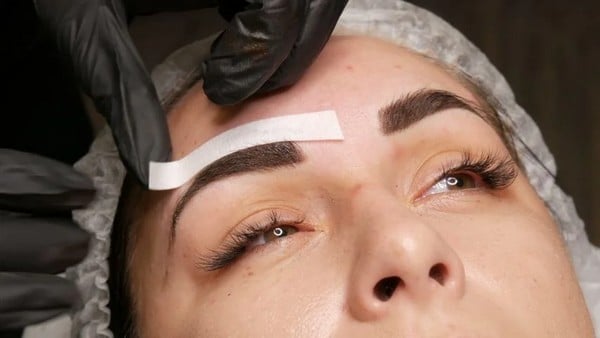
The visible signs of the procedure, such as bruising and swelling, should disappear within one to two weeks. Activities can be resumed after one week, if they are not strenuous. Although various techniques can be used for the operation, it is recommended that you do not wax or thread your eyebrows for at least 4 weeks after the operation.
Cataracts, or clouding of the lens, is an eye disease that robs people of their ability to see the world around them in all its colors and requires the replacement of the natural lens of the eye with an artificial lens. Modern cataract removal techniques allow the patient to go home on the day of surgery. But this does not mean that you can immediately lead a normal life. Doctors always give advice on what you can and cannot do after cataract surgery during the rehabilitation period to ensure full recovery of vision.
The direct brow lift is a technique that involves a hidden incision in the margin of the forehead on each side. According to the American Society of Plastic Surgeons, it is of utmost importance that surgical incisions not be subjected to anything that promotes swelling, movement or abrasion during the healing period. This is why now is not the time to have your eyebrows treated. Since you will still be in healing mode, you can wait until your recovery is complete.
What activities should be avoided after cataract surgery?
If you plan to use makeup after cataract surgery, you need to buy new makeup. This is especially important when it comes to eye makeup, such as mascara, eye shadow or eyeliners. These can easily transmit bacteria into your eye if you use old makeup.
Until your surgeon tells you that you can be satisfied with light activity. Avoid heavy lifting, exercise and other strenuous activities.
Exercise can cause complications during your recovery. You are more likely to have an accident if you do something physically demanding. So take it easy for a while.
And that’s not the only reason to pluck your eyebrows again. We think you should totally pluck your eyebrows. To us, it’s crazy that people still wax with brown wax. It’s the fastest way to prematurely age your eyes and the aging process doesn’t want to be accelerated. Because of the very sensitive eye area, it is thought that waxing can damage the skin. Instead, waxing should be done, but be careful not to over wax.
You may see a few hairs grow back a few days after your first session, but that’s nothing to worry about. This simply means that during the procedure, your hair was not long enough. The purpose of your second appointment is to collect and remove this hair.
If your hair becomes irreversibly annoying, you can go much earlier. For each part of your body, the timing is different.
What are restrictions after cataract surgery?
Depending on the amount of post-operative inflammation, you will need these drops for a few weeks to a month. Be sure to use these eye drops exactly as prescribed.
Oral analgesics such as acetaminophen may be prescribed, if necessary. In general, however, you should experience only mild discomfort after cataract surgery.
For a safe and speedy recovery after cataract surgery, follow these tips:
- Do not drive the first day after surgery.
- Do not do heavy lifting or strenuous activity for a few weeks.
- Immediately after surgery, avoid bending over to avoid putting extra pressure on your eye.
- If possible, do not sneeze or vomit immediately after the operation.
- Be careful walking after surgery, and do not bump into doors or other objects.
- To reduce the risk of infection, avoid swimming or using a hot tub for the first week of your recovery from cataract surgery.
- Do not expose your eye to irritants such as dust, dirt, wind and pollen for the first few weeks after surgery.
- Do not rub your eye after surgery.
What happens if you don’t wear sunglasses after cataract surgery?
Everyone should protect their eyes from UV rays outdoors, before and after cataract surgery. In fact, UV protection can even slow the development of cataracts. Therefore, there is no specific time frame for wearing sunglasses after cataract surgery.
However, it is especially important to wear sunglasses diligently after cataract surgery during the first month of recovery, with the first four weeks of healing being the most sensitive period.
The doctor also uses eye drops to dilate your pupils during surgery, and they may remain dilated for about a week after surgery. When your pupils return to normal, they may shrink to prevent too much light from entering your eyes. In rare cases, the pupils may remain permanently dilated. Sunglasses can help reduce the extra sensitivity to light caused by pupil dilation and eye surgery in general.
But that doesn’t mean you can stop wearing sunglasses with UV protection once your eyes have healed. UV protection is needed outdoors, in the sun and in the shade. You should wear protective sunglasses all the time, it is a good habit with no time limit.
When can I get water in my eye after cataract surgery?
The first few weeks after surgery:
- You can take a bath or shower, but avoid putting water in or near your eye.
- You will usually have a follow-up visit with your doctor the day after surgery. Have someone drive you to your follow-up visit. Avoid driving until the doctor has verified that it is safe for you to do so.
- Wear dark sunglasses that protect against ultraviolet (UV) light when you are outside.
- Your eye may still feel a little gritty and/or sensitive to the touch for a few days after surgery.
- It is not unusual to experience glare and halos around lights for the first few weeks after surgery.
- Continue to use your eye drops according to the schedule your doctor has given you. Your doctor may recommend frequent use of artificial tears if your eyes are dry. Keeping your eye moist will help it heal faster.
- You should be able to drive, return to work and resume normal activities within a week of surgery.
What happens if you wax your eyebrows?
When you get your eyebrows waxed, the hair tends to grow back a little softer and finer. Over time, if you continue to wax, your dense, coarse eyebrows will be a thing of the past.
In addition to hair thickness, waxing also helps the hair grow back in the desired shape and direction. Who knew that waxing not only gets rid of unwanted hair, but also gradually influences hair growth! It’s rather pleasant, if you will.
Waxing at home with tweezers, or even DIY waxing, often results in an overzealous approach that leaves overly thin eyebrows and an arch that isn’t quite right. Threading is another popular choice, but it requires a highly trained technician, or you may not be satisfied with what you see. Waxing gives a predictable, pleasing result that won’t leave you with a permanent look of surprise or considering long bangs to hide them.
How long do you use drops after cataract surgery?
The use of eye drops during recovery from cataract surgery is a key part of the healing process. The team at our eye care center in Detroit, MI, would like to address some of the basics regarding postoperative eye drops for cataract surgery patients.
After cataract surgery, your eyes are vulnerable to infection and complications, which requires special attention. While sunglasses and proper rest will help you recover, eye drops will play a crucial role in protecting your eyes and preventing post-operative problems.
There are three types of eye drops that will play a role in the recovery from cataract surgery:
- Antibiotic eye drops
- Anti-inflammatory eye drops
- Lubricating eye drops
Can I wear makeup after cataracts?
Many cataract surgery patients want to know when they can start wearing makeup after laser cataract surgery. There is no set rule regarding waiting time; every patient is different. At a minimum, most patients should not wear any type of makeup (powders, foundation, or eye makeup) for at least a week after surgery. Some patients may have to wait a month after surgery.
If you wear makeup too soon after surgery, you run the risk that makeup particles and/or applicators will interfere with healing. You also run the risk of infection.
Don’t assume that your eyes are healed; always ask your doctor when you can start applying minimal makeup (eye shadow, eyeliner and mascara). You may also consider purchasing new eye makeup after cataract surgery to further reduce the risk of infection.
What happens the day after cataract surgery?
The day after your cataract surgery, your vision may be blurry or uneven. This is normal because your vision needs time to adjust and heal.
Most cataract surgeons will ask you to come in for your first follow-up appointment the day after your cataract surgery. It is extremely important that you attend this appointment.
This allows your surgeon to check how your eye is beginning to heal and if there are any complications or signs of infection. If there are problems, it is always best to detect and treat them early.
Should you wax the top of your eyebrows?
Not waxing over the top of the eyebrow is an old wives’ tale. Whenever possible, always pluck above the eyebrow for a smooth finish.
Tweeze to remove hair and pluck to shape. You should wax and dye your eyebrows every four weeks, depending on hair growth, but you should style them daily with eyebrow products to keep them neat and beautiful.
If your brows start, arch and end in the right place, your face will look balanced and structured. This is what we call “eyebrow reshaping” because it makes a big difference to your face.
To do this at home, grab a makeup brush and an eyebrow pencil. Start at the side dimple of the nose and hold the brush straight. Use the pencil to mark the height of your eyebrows. This is where your eyebrows should start. If the start is in the right place, your nose will look thinner.
For the arch, again hold the brush at the dimple, look straight ahead and tilt the brush over the pupil. Make a mark at the forehead. This is where the nose should be arched. If it curves in the right place, your eyes will look more open and you’ll create an instant lift!
For the end of the eyebrow, hold the brush at the dimple and tilt it toward the end of the eye. Mark the end of the brow. This is where your eyebrow should end. If the brow ends in the right place, your cheekbones will look more
Will eyebrows grow back after years of waxing?
After a hair has been plucked from the root, a new hair begins to grow in its place. Although it takes some time for the new hair to be visible on the surface of the skin – the eyebrow hair growth cycle can take four to six weeks – you can be sure that it will grow back.
The only reason the hair may not come back is if a follicle was damaged or traumatized during the waxing process. Repetitive and excessive hair removal is often to blame in this case.
As with hair removal, hair grows back more slowly because it has been pulled out at the root. Some people expect hair to grow back smoother and sparser after waxing, but others find that their hair grows back as regularly as it did before waxing.
How do you wax your eyebrows without honey?
Although lemon and honey are the main ingredients in most sugar wax recipes, you can still make it using substitutions. You can swap the lemon for apple cider vinegar or other citrus, while the honey can be replaced with lighter grade molasses or dark corn syrup.
Hair removal options, like those found on Amazon, are relatively inexpensive when it comes to professional hair removal. It’s better to invest in one of these than to make your own solution.
By now, you should already know the importance of honey and lemon in your approach to making a homemade sugar wax. However, it’s inevitable that you’ll run out of these ingredients at times, but before you run to the nearest store, look for the following items in your kitchen first so you don’t waste your time and effort.
Molasses – Molasses is the byproduct of extracting sugar crystals from sugar cane. It usually looks like a dark kind of syrup, and the darker it is, the less sweet it is. Lighter molasses is the only edible molasses you can use for baking and candy making. In our case, you can use it as a substitute for honey.
Dark corn syrup – This one can also be used as a substitute for honey, and it’s simply a combination of corn syrup and molasses.
Apple cider vinegar – You probably have one of these lying around in your kitchen. If you run out of lemons to squeeze, you can use apple cider vinegar as a replacement, as its acidic content works just like lemon juice.
Citrus Juice – Lemon is one type of citrus fruit, so you can use other citrus fruits as a replacement if you don’t have lemons available. Some of the most well-known and common citrus fruits include oranges, grapefruits and limes.


